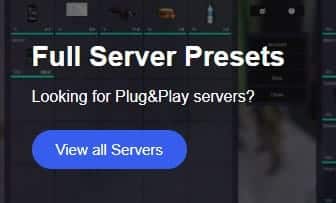Are you a big fan of FiveM servers and want to make yours even cooler? Do you like the idea of creating your own special scripts to make your server unique? If that’s a yes, you’re in the right place! At FiveM-Mods.net, we’re all about helping you learn how to code in LUA, the language used for FiveM scripting. This will give you the power to create awesome scripts that can change the game on your FiveM server.
Why Learn LUA Coding for FiveM? Learning how to code in LUA for your FiveM server opens up a world of possibilities. Whether you want to add new game features, make server management easier, or add fun stuff to your server, knowing LUA coding is key. It might seem a bit tricky at first, but with our help, you’ll quickly get the hang of it and be able to start making your own cool stuff.
What You’ll Find in Our FiveM Scripting Guide
Building Blocks of LUA Coding: We kick things off with the basics, making sure you have a solid grasp of LUA syntax, including variables, functions, and control structures.
FiveM-Specific Skills: Dive into the world of FiveM scripting and explore functions and methods unique to this platform. You’ll uncover how to interact with in-game elements, manage players, handle vehicles, and more.
Crafting Your Own Custom Scripts: Once you’ve mastered the fundamentals, we’ll walk you through the process of crafting your very own custom scripts. Whether it’s a fresh gameplay twist or a distinctive server feature, you’ll possess the tools to bring your creative ideas to life.
Navigating Challenges and Debugging: Coding can have its share of bumps, but we’ve got your back. Discover how to identify and resolve common errors, ensuring your scripts run smoothly.
Setting up a server on FiveM
The easiest way to set up a FiveM server (without developing at all) is to download a server template. Here is a detailed tutorial about how to set up a server base for your first step:
- Create a new directory (for example
D:\FXServer\server), this will be your server folder - Download the last server version of FiveM: artifacts server.
- Extract the files
- Download and extract cfx-server-data to a folder, for example to
D:\FXServer\server-data. - Create a server.cfg file inside the directory:
server-data(this is an example: example server.cfg). - Generate a new FiveM key from the keymaster: https://keymaster.fivem.net.
- Adjust the key inside the server.cfg:
sv_licenseKey "licensekey". - Start the server! Done.
Here is a useful video tutorial from YouTuber “Jeva” showing on how to create your first resource:
Explanations of Wording
Definition: Resources
Resources are a collection of files that can be started, stopped, and restarted individually.
A script is saved in a “resource”. For example: There is a resource for your cardealer, a resource for a weapon script, etc.
In a resources folder, you’ll find a manifest file. A manifest must be recognized by FiveM for a resource folder. Since this is a game type, some additional information is required to inform Mapmanager that it is a game type. Create a file in your GameMode folder called fxmanifest.lua (this is always Lua, even if you later write scripts in C # / JS).
Definition: txAdmin
txAdmin is a full featured web panel to Manage & Monitor your FiveM/RedM Server remotely, in use by over 10000 servers worldwide at any given time. Any FiveM server has txAdmin pre-installed so it’s the best solution to use to manage your server!

In the world of FiveM, a dynamic multiplayer modification for Grand Theft Auto V, you’ll find strong support for the versatile and widely embraced programming language, Lua. This adaptable language serves as one of FiveM’s key scripting engines, offering boundless potential for elevating your gaming experience. What distinguishes Lua is its inherent simplicity, rendering it an excellent option for newcomers and experienced programmers alike.
How to use LUA on FiveM
To use Lua in your scripts, simply use the .lua file extension. No additional configuration is required. Create a file with notepad and save it as .lua. You don’t need a compiler or similar.
Showcase Example of a LUA script
Client-Side Scripting: This type of scripting runs on the player’s local machine. It’s used for modifying the way a player experiences the game, like UI enhancements or graphical changes. It can’t directly affect other players or the server’s functionality.
Server-Side Scripting: This scripting type runs on the server and can impact all players connected to it. It’s used for game mechanics, AI behavior, and enforcing rules. Changes made here affect everyone in the server.
Step 1: Setting Up Your Environment
- Install FiveM: If you haven’t already, install the FiveM client and server software. You can find detailed installation guides on the FiveM website.
Step 2: Creating Your Script
For this example, let’s create a simple server-side script that announces a welcome message to new players when they join.
Step 3: Writing the Script
- Open a text editor or a code editor like Visual Studio Code.
- Create a new file named
welcome.lua.
Step 4: Writing the Code
Here’s the code for our example script we are creating today:
-- welcome.lua
-- Event handler for when a player joins
AddEventHandler('playerConnecting', function()
local playerName = GetPlayerName(source)
local welcomeMessage = "Welcome to our server, " .. playerName .. "!"
TriggerClientEvent('chatMessage', -1, "SERVER", {255, 0, 0}, welcomeMessage)
end)
Step 5: Understanding the Code
- We’re using an event handler (
AddEventHandler) that triggers when a player is connecting to the server. GetPlayerName(source)retrieves the player’s name.TriggerClientEventsends a chat message to all clients with the welcome message.
Step 6: Using Your Script
- Save the
welcome.luafile. - Place it in your server’s resources folder (
server-data/resources). - Add
start welcome.luato your server’sserver.cfgfile to ensure the script is loaded.
Step 7: Test Your Script
- Start your FiveM server.
- Connect as a player to your server and observe the welcome message upon joining.
Conclusion
Congratulations! You’ve just created your first FiveM script. This basic example showcases server-side scripting, demonstrating how to greet new players with a welcome message. As you continue to learn, you can explore more advanced concepts, create intricate mechanics, and contribute to your FiveM community in exciting ways. Remember, practice makes perfect, so don’t hesitate to experiment and expand your scripting skills. Happy coding!
FAQ about FiveM Scripting
There are 2 big frameworks available for FiveM servers: ESX and qbCore. Choose the one you’re more happy with. Check out our comparison right here.
Our site offers a good amount of high-quality scripts. Click here.
If you’re looking for other addons, we also recommend those sites:
If your FiveM server experiences a crash, follow these steps:
Investigate the Cause: Begin by checking your server console for any error messages or notifications. This can provide valuable information about what might have triggered the crash.
Access Error Logs: Utilize txAdmin or any other server management tool you prefer to download the error log associated with the crash. Error logs often contain detailed information about the issue.
Analyze Logs: Carefully examine the error logs to pinpoint the specific problem that led to the crash. Look for error messages, stack traces, or any unusual behavior that could shed light on the issue.
Download ready-to-go scripts
Looking to simplify the scripting process? Explore our shop for pre-made scripts and maps designed for your FiveM server. Enhance your server’s uniqueness today by accessing our website and downloading these ready-to-use resources. Elevate your server experience effortlessly!





